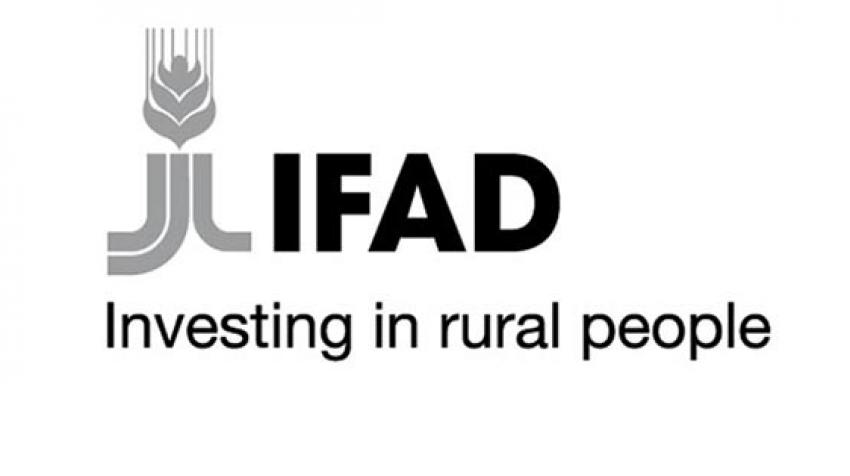Focal point
Location
The International Fund for Agricultural Development (IFAD), a specialized agency of the United Nations, was established as an international financial institution in 1977 as one of the major outcomes of the 1974 World Food Conference. The Conference was organized in response to the food crises of the early 1970s that primarily affected the Sahelian countries of Africa. The conference resolved that "an International Fund for Agricultural Development should be established immediately to finance agricultural development projects primarily for food production in the developing countries". One of the most important insights emerging from the conference was that the causes of food insecurity and famine were not so much failures in food production, but structural problems relating to poverty and to the fact that the majority of the developing world's poor populations were concentrated in rural areas.
IFAD's mission is to enable poor rural people to overcome poverty.
IFAD is dedicated to eradicating rural poverty in developing countries. Seventy-five per cent of the world's poorest people - 1.4 billion women, children and men - live in rural areas and depend on agriculture and related activities for their livelihoods.
Working with rural poor people, governments, donors, non-governmental organizations and many other partners, IFAD focuses on country-specific solutions, which can involve increasing rural poor peoples' access to financial services, markets, technology, land and other natural resources.
Resources
Displaying 86 - 90 of 102Guidance package for water development component of small tank cascade systems
Promoting Sustainable Land Management (SLM) Through Strengthening Legal and Institutional Framework, Capacity
Objectives
To develop and strengthen national policy and institutional capacity for sustainable land management (SLM) and to contribute to achieving the national land degradation neutrality target with integrated landscape management in north-western mountainous ecosystems of North Macedonia
Other
Note: Disbursement data provided is cumulative and covers disbursement made by the project Agency.
Sustainable management and restoration of the Dry Forest of the Northern Coast of Peru
Objectives
To restore and sustainably manage the dry forests of the Northern Coast of Peru, facilitating the conservation of biodiversity and ecosystem services, increasing the resilience of communities and their livelihoods and supporting the achievement of the Land Degradation Neutrality (LDN) target.
Other
Note: Disbursement data provided is cumulative and covers disbursement made by the project Agency.
Target Groups
285. Section 1.7 details the benefits in terms of environmental, economic and social sustainability. Benefits can also be organized by geographical scale, with positive socio-economic impacts at local, regional, national and other dry forest levels. 286. Committees for dry forest conservation governance, restoration and monitoring and/or integrated natural resource management will be consolidated at regional and local levels and green jobs will be created and incomes will be increased and diversified. The improvement of productive and management capacities for articulation in value chains, as well as more sustainable territorial and resource management, including protected areas that provide ecosystem services, will contribute to the improvement and sustainability of the livelihoods of men and women, mainly indigenous, who depend on forest ecosystems in the project's direct area of intervention. By expanding the range of livelihood options, in terms of the variety of resources harvested and the restoration of degraded ecosystems, as well as contributing to the improvement of economic income per unit area managed, it will contribute to food security and strengthen their capacity to adapt to climate change. 287. At the national level, and in other dry forest areas, the project will build lessons and improve the tools and capacities of decision-makers and other stakeholders for land and biodiversity management, in order to replicate sustainable biodiversity management models and financial mechanisms for the restoration, conservation and sustainable use of ecosystem services in other dry forest landscapes, which in turn provide benefits to the local population. 288. At the local, regional and national level, these benefits are related to the protection, better management of protected areas, forests of high conservation value, land restoration and reduction of GHG emissions, which will translate to reduced effects of climate change on vulnerable populations, reduced deforestation and land degradation, as well as reduced species extinction and reduced flow of ecosystem services in the dry forest. 289. The project will strengthen cooperation for the valuation and conservation of biodiversity and effective governance in the use of natural resources. It will also contribute to international and national agreements aimed at ensuring healthy and functional ecosystems. The project will protect and restore a source of biodiversity and climate change mitigation that also contributes to degradation neutrality goals, with economic, social and environmental benefits at all levels. 290. In the area of dry forests, the Project will be the opportunity to generate a broad institutional dialogue on the Integrated Management of Natural Resources, with emphasis on this ecosystem and other associated ecosystems, with the purpose of building a territorial management proposal that enhances sectoral intervention in the promotion of conservation and sustainable use of natural resources, thus contributing to the improvement of the quality of life of citizens and the interventions of the sector at national, regional and/or local level.
2022-25 DEV Uganda - Caritas Uganda
Objectives
Overall objective of the country programme 2022-25: Strengthen the resilience, social cohesion and living conditions of the populations in Uganda confronted with the effects of the multifaceted crisis by enhancing sustainable food production, increased income, and their capacity to act as change agents of own and community welfare. The long-term changes (outcomes) of the country engagement 2022-2025: 1. Farmer cooperatives, local partners and national advocacy platforms are voicing interests of small-scale farmers, refugees, and youths on issues of relevance to them, including climate change adaptation, land rights and access of women and refugees, youth employment and easy market certification of value-added produce 2. Small-scale farmers have increased sustainable production and sale of produce through organised farming and climate smart techniques 3. Increased access and use of innovative green technology solutions reducing deforestation and wood fuel dependence among refugee, host, and vulnerable households 4. Youth and women are empowered and have gained increased influence through leadership positions, school peace clubs, the national youth-led advocacy platform (NYAP) and promotion of gender equity 5. All direct local partners (incl. at diocesan level) comply with CIMS and /or CHS 6. Local partners take lead and have increased influence at the international sphere
Community Land Rights and Conservation Finance Initiative (CLARIFI)
General
Initiative zur Fördeurng von Naturschutz und Landrechten Indigener und lokaler Gemeinden (CLARIFI)
Objectives
Ziel von CLARIFI ist, die formale Anerkennung von Landrechten und Umsetzung von Plänen zur Sicherung der Existenzgrundlage, Geschlechtergerechtigkeit und selbst-bestimmter Entwicklung von Indigenen Völkern, ?afro-descendant peoples? und loka-len Gemeinschaften voranzutreiben. Über den Regrantingmechanismus werden ein-zelne Projekte von IP&LC Organisationen gefördert die mit projektbezogenen Indika-toren ausgestattet sind.






